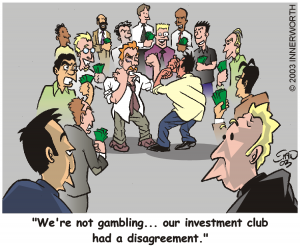In choosing a stock to trade, many traders try to identify a “good” company, but what actually is a “good” company? Many times a “good” company is merely based on an “image” or “reputation,” which may or may not have a direct bearing on whether the stock in the company is worth an investment. A common mistake among traders is to base trading decisions on hype and image, rather than on factors that will actually produce trading profits, such as current price patterns, volume, or momentum indicators.
Consider Cisco Systems. Undoubtedly, CSCO was one of the public’s sentimental favorites of the bull market. The CEO, John Chambers, was elevated to celebrity status as analysts and investors hung on his every word, waiting to hear how much money their favorite company was going to make. While the stock was going up, Mr. Chambers was the hero, but things changed.
Cisco, along with the rest of the market could not live up to the lofty expectations of its investors, and in late 2000, the stock showed clear signs of a downtrend. Once the stock was in a long-term downtrend, there was no valid reason for investing in the long term. But millions of investors were told by analysts that it was still a “good company” and that the lower price represented a “value.”
The information that the analysts and media gave investors did more damage than good, as losses mounted for holders of the stock. But did a declining share price represent a change in the viability of the company going forward or was it just a case of an imbalance in supply and demand for shares of the company? Well, Cisco is still the world leader in their field and John Chambers is probably a nice guy, but that is of little consolation to those who are still long on the stock from $50 or $60 a share. Unfortunately, they remain victims of biased analysts’ predictions, media hype and the unrealistic exuberance of the times.
So what is a “good” company? Cisco may be a “good” company in terms of its relative potential, but does that matter? The “true value” of a company is a matter of debate. And despite analysts’ predictions, no one can know with certainty that Cisco’s “potential” will be realized as future profits and future price increases.
As traders, however, it’s crucial to consider that trading comes down to whether you’re making money trading the stock in the short term, the actual dollars and cents. Media hype, image, or shareholders’ sentimental attachment to their stocks do influence prices, but as traders, it’s essential to put these factors in perspective. The masses may be easily swayed by these opinions and beliefs, but you must base your trading decisions on current signals and indicators in the short-term time frame you have chosen to trade, whether intraday or intraweek.
What is the basic price pattern, and how has it changed in subtle ways by media news? The price pattern and factors such as volume and momentum are primary; the media news is secondary. Don’t make the mistake of using an image, sentimentality, and public opinion as primary information for making trading decisions. By all means, consider these factors, but base your primary trading strategy on more fundamental short-term indicators of momentum and trend.

